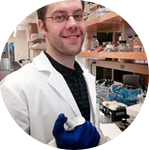Project Results
About This Project
Does science always have to be this expensive or does it feel like we are getting ripped off sometimes? Gel imagers, like most scientific equipment, are cost prohibitive (read overpriced), but we are trying to build our own from basic equipment on a tight budget. We will document the process and the results for others in need of an economical gel imager to follow.Ask the Scientists
Join The DiscussionWhat is the context of this research?
Are you a researcher who wonders why that little piece of equipment on your lab bench costs as much as your car? Are you a taxpayer whose jaw drops when you hear $2 million is being spent on researching what!? Would you cringe at paying $10,000+ for a 2 megapixel black & white camera that takes pictures of stationary objects in a box? Commercial gel imagers generally cost $5,000-10,000 or more, but the equipment design is actually rather simple. A gel imager is basically a dark box that houses a camera and a specialized light source (transilluminator). The dark box ideally blocks out all light and is made of non-reflective surfaces on the interior. It ideally would have easy access for putting and removing samples for imaging via a door, and could also have increased access to the transilluminator via a drawer. The camera is typically not a high quality camera--1-2 megapixel black & white cameras are the norm for this application. The camera must, however, be housed within the dark box and the zoom, exposure, etc. must be controllable externally (e.g. USB cable to computer). Some moderately priced webcams should suit just fine. The transilluminator is a specialized light source that illuminates the DNA sample for imaging. Building a transilluminator from scratch is beyond the scope of this project, and purchasing this will be the single biggest expense in our design.
A blue light transilluminator will be used for this project. Blue light transilluminators are a newer and better form of light source, and are actually cheaper than traditional UV light sources. Blue lights avoid the harmful effects of UV radiation, and increase cloning efficiency drastically when DNA samples are used for this. They also allow increased detection and sensitivity levels when used in tandem with new DNA stains like Biotium's GelGreen. GelGreen replaces the traditional ethidium bromide DNA stain, which is a potent carcinogen and also contributes to reduced cloning efficiency.
What is the significance of this project?
This gel imager will prevent exposure of 2 graduate students and up to 18 undergraduate researchers to carcinogenic ethidium bromide and UV light. Not only are these carcinogenic agents harmful to human health, but they also drastically reduce cloning efficiency. Currently, the imager will be used in two cloning projects. The first project is a Clemson iGEM team's pathogen detector biosensor. The other project is creation of a Sphingomonas compatible GFP-fusion expression vector. We expect the imager to serve many future projects as well.
What are the goals of the project?
1) Purchase IO Rodeo mini blue LED transilluminator and Logitech C920 webcam.
2) Work with our Instrument Lab to build a dark box to house the transilluminator and webcam to our specifications.
3) Image DNA electrophoresis gels with Biotium GelGreen and analyze the quality of the images.
4) Document the design and build process as well as compare the image quality obtained to another commercial gel imager. Share our results and instructions on YouTube.
Budget
Only two items need to be purchased: a mini blue LED transilluminator from IO Rodeo and a Logitech C920 webcam from any supplier (e.g. Amazon). Our on-campus Instrument Lab will build a dark box to our specs at no cost to us. The computer will be an old salvaged laptop--also for free. If we exceed the funding required for the gel imager, we will purchase 0.5mL of GelGreen which should be good for about our first 170+ DNA gels.
Meet the Team
Team Bio
Aaron Brown is a PhD candidate in Microbiology at Clemson University. He also received his MS in Microbiology from Clemson. His project is creating a Sphingomonas compatible GFP-fusion expression vector. He also works with about fifteen undergraduate students as part of Clemson's iGEM team. They are working to create a universal pathogen biosensor. He is also a Teaching Assistant for Bacterial Physiology lab in the Spring semester and Microbial Genetics lab in the Fall semester.Project Backers
- 9Backers
- 110%Funded
- $220Total Donations
- $24.44Average Donation
